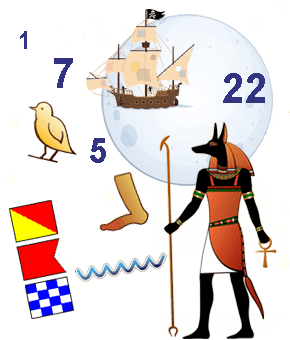
Kaylee in Nautical Flags







 Just as requested. The name Kaylee written in Nautical Signal Flags.
Just as requested. The name Kaylee written in Nautical Signal Flags. Be creative with the name Kaylee.
Learn about name meanings, name origins, name popularity, famous namesakes and more on our Kaylee Meaning & More page.
Looking for something more mystical? Visit the Kaylee Numerology page.
Just for fun, see the name Kaylee in Hieroglyphics, learn about ancient Egyptian Hieroglyphics and write a Hieroglyphic message.
The history of Flag signalling dates back thousands of years, when it was primarily used in military situations. For example, the Roman navy used red flags or cloaks as signals between vessels. Early use of flag signalling was however primitive and inconsistent.
It was not until the early 18th century, that navies began to standardize the messages. A number of signal codes were used.
Marryat's Code, published in 1817, was the first general system of signalling for use by merchant vessels and the most widely used system prior to 1857.
By the mid 19th century, in 1855, the first International Code of Signals, the Commercial Maritime Code, was drafted and then published in 1857, by the British Board of Trade in an effort to define a standard form of communication between vessels at sea and shore.
This original form of the code, still in use today, included 18 signal flags that could convey up to approximately 1,000 messages.
The code was subsequently modified in 1932 when six flags were added to accommodate different languages, and again in 1969 when more flags were added to accommodate Russian and Greek and the range of messages was reduced to focus on navigaion and safety.
Today the code, known as the International Code of Signals (ICS), is made up of 40 flags.
Naval ships generally do not use the ICS to communicate but rather their own navy's, or group's (e.g. NATO) code using the same set of flags. The first flag hoisted (a designator flag) indicates whether the signal should be interpreted as an ICS or naval signal.
One of the most interesting aspects of the ICS is that all of the standardized messages are the same for nine languages including English, French, Italian, German, Japanese, Spanish, Norwegian, Russian and Greek.
It is unimportant that the sender and receiver speak different languages as each is using a book in their own language which keys equivalent messages to the same code.
The International Code of Signals (ICS), is made up of 40 flags.
There are 26 flags to represent the alphabet, 10 to represent the numbers 0 through 9, three "repeaters", and an answering flag, to signify that a message has been received.
The "repeater" flags are used to repeat a flag previously used in a sequence.
The alphabetic flags also have a relationship with the international radio code, each having a code word associated with it, as described in the table below.
Each signal, which is made up of a combination of flags, has a unique meaning and can be categorized as follows:
- One Flag - urgent, important or common messages
- Two Flag - general code, primarily emergencies and navigation
- Three Flag - all starting with the letter "M" are from the medical code of signals
Flags may be used as signals in a number of ways:
- Used as individual letters to spell out an alphabetic message (see chart below)
- Used for their individual pre-defined internationally recognized meanings (see chart below)
- Used individually or in combinations to form a code word whose meaning can be looked up in a code book held by all parties using the messaging system.
- In yacht and dingy racing, the flags have additional meanings.
| Symbol | Meaning | ||
|---|---|---|---|
| A | Alpha | I have a diver below, keep clear at slow speed. | |
| B | Bravo | I am taking on, discharging or carrying dangerous cargo. | |
| C | Charlie | Yes or Affirmative. | |
| D | Delta | I am maneuvering with difficulty, keep clear of me. | |
| E | Echo | I am altering my course to starboard. | |
| F | Foxtrot | I am disabled, communicate with me. | |
| G | Golf | I require a pilot. | |
| H | Hotel | I have a pilot on board. | |
| I | India | I am altering my course to port. | |
| J | Juliet | I am on fire and have dangerous cargo, keep clear. | |
| K | Kilo | You should stop your vessel immeadiately. | |
| L | Lima | I wish to communicate with you. | |
| M | Mike | My vessel is stopped, making no way. | |
| N | November | No or Negative. | |
| O | Oscar | Man overboard. | |
| P | Papa | All aboard, proceeding to sea. | |
| Q | Quebec | My vessel is healthy, request clearance into port. | |
| R | Romeo | The way is off my ship. | |
| S | Sierra | Moving astern. | |
| T | Tango | Keep clear, engaged in trawling. | |
| U | Uniform | You are running into danger. | |
| V | Victor | I require assistance (not in distress). | |
| W | Whiskey | I require medical assistance. | |
| X | X-ray | Stop carrying out your intentions and watch for my signals. | |
| Y | Yankee | I am dragging my anchor. | |
| Z | Zulu | I require a tug. |

